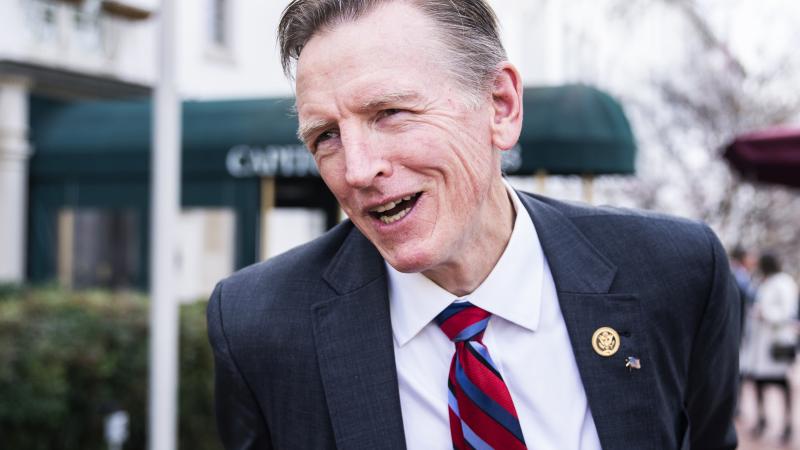U.S. fertility rate falls to record low; European-style 'pro-family' benefits offer no panacea
Countries with the most generous leave policies are also seeing sub-replacement fertility levels.
Demographers and policymakers scrambling to address the plummeting U.S. fertility rate may have to reconsider one oft-touted solution: The "pro-family" policies that have long dominated in Western Europe — without producing the anticipated fertility spikes.
The U.S. Centers for Disease Control and Prevention reported this month that the country's fertility rate for 2020 was "down 4% from 2019," which the agency called "another record low for the United States."
Conventional political wisdom has for years asserted that low birth rates can be tied to a lack of policies such as free government childcare and education, generous maternity and paternity leaves, and other government initiatives that ease the financial burden of having children.
Advocates have based such assumptions on studies that have claimed to find links between generous family policies and higher fertility rates. Also adduced as evidence are data such as the finding by a 2018 New York Times poll that men and women of chlidbearing age regularly cited financial concerns as a reason for having fewer or no children.
Those beliefs have long motivated policymakers to try to get more money in the hands of families as a measure to increase the fertility rate. Utah Sen. Mitt Romney said in March of this year that he favored increased welfare programs in part to "provide the incentives for people to have kids and to maintain our population," a familiar refrain among family policy advocates.
Yet overall, years of data do not indicate a clear correlation between generous state policies and higher fertility rates, at least not at a level that would address major population and demographic concerns.
At issue is what demographers call the "replacement rate," or the fertility rate at which societies must propagate in order to ensure a stable population. Experts say women must have on average 2.1 children to produce a non-shrinking, non-growing population.
Numerous countries with expansive family welfare policies do not show replacement-level fertility rates. The London School of Economics and Political Science in one 2019 survey ranked Sweden, Iceland and Norway in the top three spots in Europe for overall family policies; all three countries, according to the World Bank, are currently well below replacement rate. Norway has not been above that rate since 1975, Sweden since 1991; Iceland was above it as recently as 2010 before joining both countries in a sharp plunge.
Other countries in western Europe show a similar lack of correlation between family policies and fertility. UNICEF in 2019 identified Estonia as offering 85 weeks of maternity leave at full pay; fertility there plunged below the replacement rate in the late 1980s and has not risen above it since. Hungary offers 72 weeks of paid leave for mothers; that country has not seen a replacement rate since the mid-1970s.
Nicolas Ziebarth, a professor in Cornell University's department of policy analysis and management, said that the relatively few studies that have examined family policy effects on fertility rates have found "rather small effects in the short run."
Noting that "birth rates are much higher in the US despite the lack of generous family policies and the high costs," Ziebarth suggested that "a lot depends on culture and social norms."
"I think it is fair to characterize the policy debate as inconclusive," he said. "My personal summary is that family policies matter, but probably slowly and in the long run, whereas few families will have another child (or decide to have children) in the short run, just because parental leave options became more generous."
"An open question, in my view is, how such policies affect fertility in the long-run," he said. "We don't know much about this."
Alaka Basu, a professor in Cornell's Department of Global Development, said that earlier demographic science assumed that "once fertility decline begins in a society and birth rates fall by about 10%, further declines are inevitable and usually irreversible." Evidence for that theory has been "mixed," she said, but largely consistent with that earlier theory.
"It appears that once women experience the 'freedom' of fewer births, they are not very keen to go back to increased childbearing," Basu said.
"The one counterexample I can think of is Sweden," she continued, "which, through an expansion of family friendly policies some time back, did see at least a temporary rise in fertility closer to replacement levels in the 1990s and 2000s."
Yet "Swedish fertility is now beginning to fall," she added, "so it is not clear that the response to family friendly policies is indefinitely positive."
Basu suggested policymakers might focus on providing "greater support to women who want to become pregnant but cannot for biological or social reasons," with an emphasis on "greater support for assisted reproductive technologies" as well as "more social and medical support for the reproductive desires of women in unconventional families," such as single women and lesbians.
"On the whole however," she said, "I think the social and attitudinal changes accompanying low fertility will take several years to reverse to the revalorization of motherhood and especially multiple births motherhood."
The CDC in its report this month noted that the U.S. total fertility rate was "again below replacement" last year.
"The rate has generally been below replacement since 1971," the agency said, "and has consistently been below replacement since 2007."
















